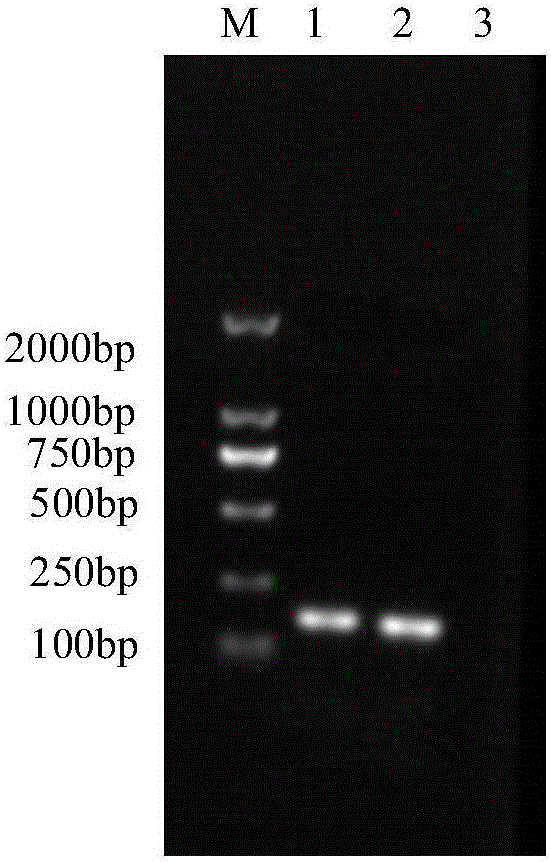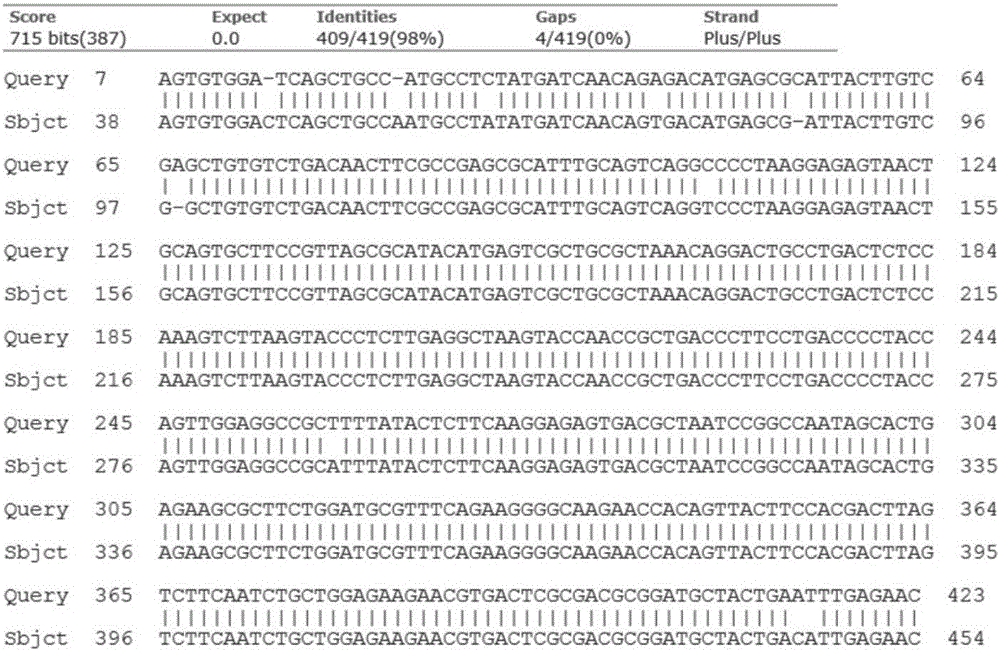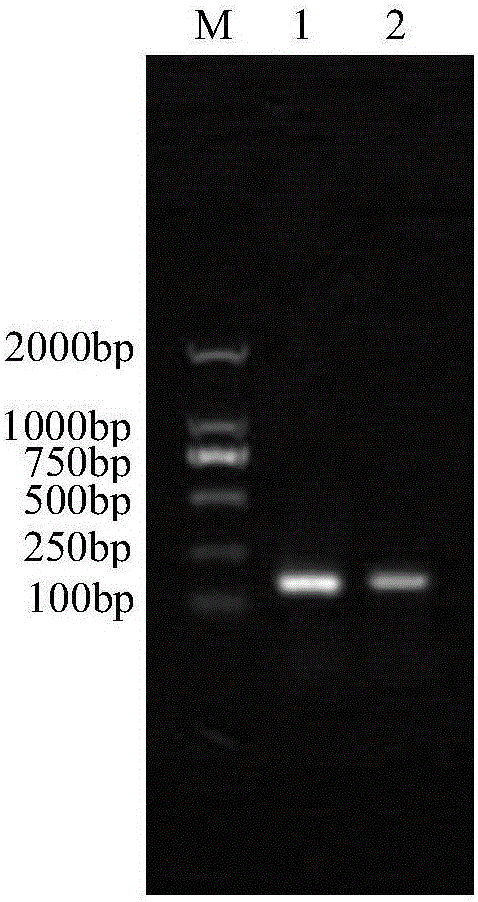Fluorescent PCR (polymerase chain reaction) detection kit for babesia caballi disease
Babesiosis equine and kit technology, applied in the field of biological detection, can solve the problems of time-consuming, poor specificity, expensive kits, etc., and achieve the effect of eradicating harm and ensuring healthy development
- Summary
- Abstract
- Description
- Claims
- Application Information
AI Technical Summary
Problems solved by technology
Method used
Image
Examples
Embodiment 1
[0031] Example 1. Designing detection primers, fluorescent probes and obtaining local positive target gene fragments. The inventors designed specific primers based on the published Bc48 gene sequence as shown in SEQIDNo.1 and SEQIDNo.2. The designed specific primers used PCR Amplify the genome of Xinjiang local insect strains to obtain the target antigen gene. As a specific target antigen gene, its nucleotide sequence is shown in SEQ ID No. 4, and the target antigen gene sequence is used as a genetic marker for detecting Babesia equine Things. In addition, those skilled in the art should understand that specific fragments of this sequence can only be used as genetic markers for detecting Babesia equine disease.
[0032] Obtain the target antigen gene: (1) According to the published Bc48 gene sequence, design specific primers as shown in SEQ ID No. 1 and SEQ ID No. 2 and probes as shown in SEQ ID No. 3; (2) Use PCR technology to extract the genome of local strains Amplify the tar...
Embodiment 2
[0033] Example 2. Establishment of fluorescent PCR detection method for Babesia equine: (1) Use specific primers for routine amplification (see attached image 3 ); (2) Application of specific primers and probes for fluorescence amplification; (3) Optimization of fluorescence PCR amplification system; (4) Comparison of sensitivity, specificity and stability of fluorescence PCR methods (see attached Figure 4 , Attached Figure 5 , Attached figure 2 ); (5) Compare the fluorescent PCR method with other detection and diagnosis results to detect the coincidence rate.
Embodiment 3
[0034] Example 3. Development of a fluorescent PCR detection kit for Babesia horsetail
[0035] (1) Use of the kit: This kit is used to detect whether horses are suffering from Babesia equine disease. It is used to detect whether the blood samples of equine animals contain Babesia equine. This detection method can be used in epidemiology. Research and formulate measures to reduce the prevalence of Babesia horses in horse herds.
[0036] (2) The principle of the kit: This kit uses the MGB fluorescent PCR detection method. The TaqMan MGB probe is improved on the basis of the TaqMan probe. The biggest difference from the TaqMan probe is that its length can be shortened to 13bp. The distance between the fluorescent group and the quenching group is closer, and the quenching effect is better. The 3'end of the probe is labeled with a quenching group that does not emit light, and the fluorescence background is reduced. The resolution of the fluorescent tube is greatly improved. Reduce bac...
PUM
 Login to View More
Login to View More Abstract
Description
Claims
Application Information
 Login to View More
Login to View More - R&D
- Intellectual Property
- Life Sciences
- Materials
- Tech Scout
- Unparalleled Data Quality
- Higher Quality Content
- 60% Fewer Hallucinations
Browse by: Latest US Patents, China's latest patents, Technical Efficacy Thesaurus, Application Domain, Technology Topic, Popular Technical Reports.
© 2025 PatSnap. All rights reserved.Legal|Privacy policy|Modern Slavery Act Transparency Statement|Sitemap|About US| Contact US: help@patsnap.com



